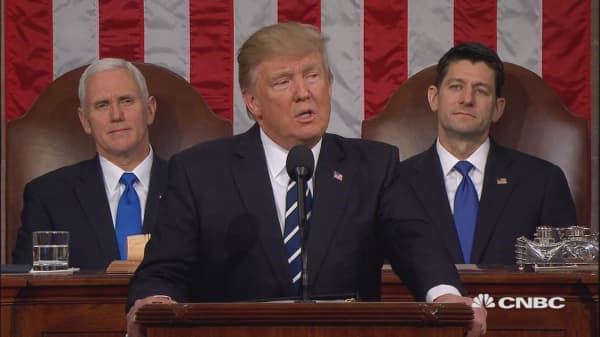When President Donald Trump promises to "get Americans back to work," he often points to the roughly 94 million people who are out of the labor force.
But while the number is accurate, it's hardly an indication of massive unemployment. Many of the people who are outside the workforce either don't want a job or can't work.
The number comes from the monthly survey by the Bureau of Labor Statistics tracking the U.S. labor market. Respondents are asked if they are employed, unemployed, or actively looking for work. People who haven't looked for a job in the last month are considered not "in the labor force."
That 94 million figure may seem like a lot. But it's the difference between the total "civilian noninstitutional" population of about 254 million Americans and the roughly 160 million who are employed. "Civilian noninstitutional" just means people who aren't in the military, in prison or a nursing home.
Of those who are able to work and want a job, only about 7.6 million can't find work, as of the latest data.
So, who is in that group of 94 million?
Some 20 million people are estimated to be attending college in the U.S. While many of them are working to put themselves through school, millions of them are not actively looking for work until they graduate and are not counted in the Labor Department's count of the workforce.
Another large group of those in the "not in the labor force" category are unable to work. About 56.7 million people — roughly one in five Americans — had a disability in 2010, according to the Census. More than half of them report that their disability is severe. Among those aged 21 to 64, about 40 percent were employed.
The biggest increase in people leaving the workforce stems from the 55 and older demographic, as the demographic bulge of baby boomers reaches retirement age.
A study by the Chicago Federal Reserve found that, since 1999, about half of the drop in the number of people leaving the workforce are aging boomers.
"These patterns are expected to continue, offsetting (labor force participation) improvements due to economic recovery," the authors concluded.





